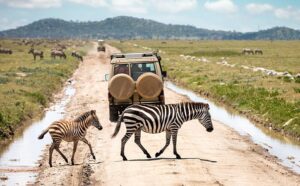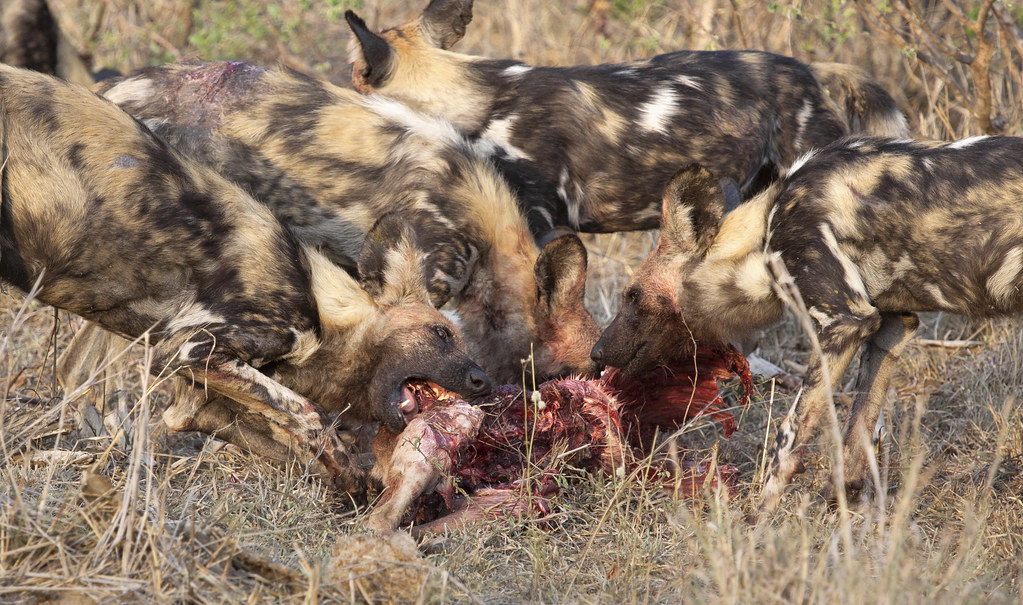Self-drive Nyerere/selous | This is your ultimate travel guide
We appreciate that the Nyerere/ Selous National Park is probably among the places where you’re most excited about visiting Tanzania on a self-drive safari. Whether you’re an independent traveller or an adventurous road tripper, this site will provide you with all the knowledge you need to organize the perfect Nyerere/ Selous trip. We will discuss travel schedules, necessary permissions and taxes, optimal visiting times, and much more. With an adventurous spirit and a calm disposition, be ready to discover this first-rate safari park!
we acknowledge that Nyerere is not as popular as parks in the northern part of Tanzania and welcome fewer visitors in relation to the northern parks but be fooled. this gem have got a lot to offer that you will discover on your visit to this park from Dar es Salaam.
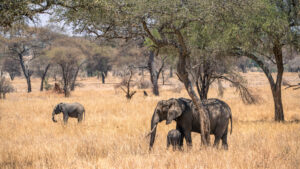
Can I explore the Nyerere/ Selous on a self-drive safari?
It is totally possible to go on a self-drive safari through the Nyerere/ Selous national park. Solo safari exploration in the east Africa largest protected area—is an incredible experience.
The Mtemere Gate is the most common entrance, as it can easily be accessed from Dar es salaam and located near Kibiti Town. From this gate you can easily connect to Rufiji river for the boat cruise where you will encounter various animals on the banks of the river.
Even if you are an experienced driver, you should still take it easy because driving too fast might be dangerous and difficult. The Nyerere is a little more difficult than other parks, so beginners should build experience and confidence in parks like Mikumi, Lake Manyara, Tarangire, or Ngorongoro before taking on the more difficult Nyerere. The alternative is to hire a local driver-guide who is familiar with the area and can take the wheel to ensure your safety as you self-drive across the Nyerere national park.
Driving times between Dar es Salaam and Nyerere national park.
The driving time from Dar es salaam to Nyerere national park ranges between 7 to 8 hours via Julius Nyerere road. Keeping this in mind while planning your self drive safari will smoothen your self drive safari planning.
the last fuel station before accessing Nyerere national park is located in Kibiti, the town next to the park. It is wise to refill before entering the park as you might get stuck within the park.
Exploring Nyerere National park
Situated in southern Tanzania, Nyerere National Park (formerly Selous Game Reserve) is the largest park in the nation. You might want to consider hiring a Park guide or a park ranger to accompany you on your explorations of Nyerere; the area is vast and forested, making it difficult to see predators on a self-drive safari.
Guests of the eastern camps can enjoy game drives mostly via a network of unpaved roads that lead to five lakes that are nourished by the Rifiji River. The afternoon light on the Rufiji River is very breathtaking, so be sure not to miss out on this must-do boat ride.
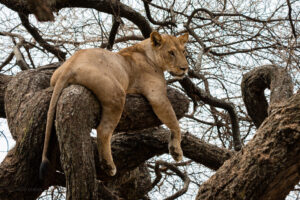
Nyerere fees & permits
At the gate, visitors can arrange for Nyerere permits with a credit card. These permits are managed by the Tanzania National Parks Authority (TANAPA). We do not require any kind of advance booking. We do not take cash or debit cards.
For a clear overview of the entrance fees to, Nyerere Serengeti and other national parks in Tanzania, we gladly refer you to our TANAPA Tariff.
When to visit Nyerere – a month-by-month guide
During the dry season, which lasts from July to October, visitors to Nyerere National Park are able to see the park’s most abundant species. To the north and west, you’ll find the expansive newly-named Nyerere National Park; to the east, you’ll find the Selous, which is not actually a part of the park but adds to its overall size.
As a safari destination, Nyerere is home to numerous antelope species, lions, giraffes, eland, wildebeest, and the Big 5 (though rhino sightings are very rare). The area is renowned for its large numbers of African wild dogs, which may be the largest on the continent. Attracting a wide range of bird species, the park’s breathtaking and varied terrain features important rivers, marshes, woods, and hot springs. On a little peninsula with a view of a beautiful lake, you’ll find Asilia’s remote Roho ya Selous.
June To September
After a lengthy rainy season, Nyerere National Park is verdant and lush in June as it enters the dry season. With all the waterways full, boating is at its best. Even though it could be a little chilly in the morning, the park will dry out over the next few months, so expect temperatures to rise gradually. If you want to avoid the high season prices and enjoy dry weather, late June is the perfect time to go. Starting in July, the park enters its peak season, when game viewing is at its optimum. Amazing game viewing opportunities arise as a result of the growing number of animals vying for dwindling supplies of water in the few remaining lakes and rivers. The sun is shining, the grass is decreasing, and it’s the perfect time for walking safaris and wildlife drives.

October to January
The park has the driest month of October, making it the ideal time for walking safaris and wildlife drives. While watercraft safaris are generally out of the question due to the low water levels, the game watching is out of this world during this period. As November progresses, afternoon storm clouds develop, causing the humidity to rise. These clouds finally burst, bringing with them the commencement of the brief showers. This time often begins in the middle of November and continues well into December, providing the area with much-needed reprieve in the form of daily afternoon rains. The scenery and animals are revitalized, the air is cleared of dust, and the water levels are back to normal, allowing boating to start again. The park is often verdant and fresh by the end of December, when the short rains have typically ended, but the foliage is not as dense as it would be after the long rains. The weather in January is hot and dry, with just the rare shower. During this time, migratory birds from Europe and Asia arrive, making birding safaris even more exciting. Seeing animals is a bit more difficult than during the peak of the dry season, but it’s still worth it.
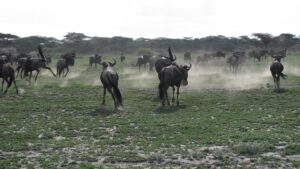
February to May
Like January, February has hot, sunny days with the odd shower. The park is verdant, and while seeing wildlife is still difficult, birdwatching is fantastic, especially from a boat. March is often marked by increasing humidity and frequent cloud cover in the afternoons, which herald the impending long rains. Midway through March and continuing into May is when you can expect the rainiest weather, with downpours that last days and even prevent planes from landing, ruining your safari experience. During this time, our campers, along with the majority of them in the area, will be closed so that we may do necessary repairs and renovations before the new season begins in June. The park is typically at its most verdant and verdant by the end of May, when the rains have ceased, thanks to the surplus of water and dense vegetation.
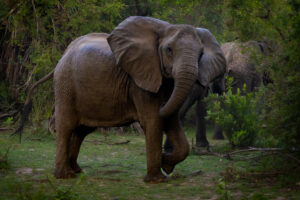
Guided or self-drive safari?
When deciding on a self-drive safari, several tourists express concern about the likelihood of seeing predators like large cats.
If you want to improve your chances of seeing wildlife, hiring a guide is a must. Animals can be more easily located when guides use walkie-talkies to communicate with one another. But there’s a catch: all those cars following each other’s routes make for a rushed and congested experience, especially during the peak season when traffic is already heavy. Because of this, one may not get the full benefit of being in nature.
Playing hide-and-seek with the animals is a lot like going on a safari. Finding them is like no other sensation of accomplishment. In our opinion, there is a special delight in discovering the Nyerere at your own leisure, finding animals on your own, and going at your own speed. So, instead of scheduling an organized tour, we always suggest a self-drive excursion.
Camping and lodges in the Nyerere National Park
A trip to the Nyerere is not cheap. One way to save money on lodging is to camp out at public campgrounds on your own. The campsite at Selous River Camp is situated in the woodland behind the main camp area , which only cost 10$ per night.
This campsite is never over populated like the case at seronera campsite in Serengeti during the peak season. Therefore, you will e able to enjoy your privacy regardless of the season of your visit.
The best lodges in the Nyerere
If you stay in a lodge, expect to pay the following prices:
- Budget: US$200 – $400 for a double room, full board
- Mid Range: US$400 – $600 for a double room, full board
- Luxury: > US$600 for a double room, full board.
Taking off on your Nyerere self-drive adventure
Are you ready to rent a car and explore the Nyerere on a self-drive trip? Get in contact with our experienced team at Self drive in Tanzania to check availability, and secure your 4×4 now!
